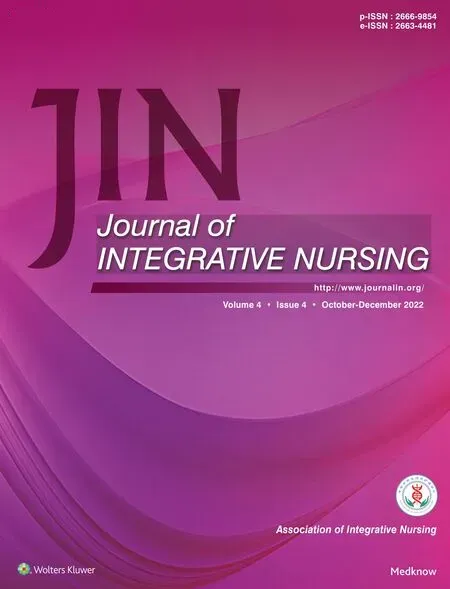A simple concept of fluid balance can be harder in the intensive care unit
Dear Editor,
Fluid therapy is the mainstay of treatment in patients with acute circulatory failure causing intravascular volume expansion resulting in increased cardiac output,tissue perfusion,and oxygen delivery.The “early goal-directed therapy” highlighted the importance of early resuscitation with intravenous fluids in patients with septic shock.[1]Nevertheless,later,it was realized that the effect of volume expansion on cardiac output is inconsistent.Only half of the patients show increased tissue perfusion (improvement in blood pressure,urine output,and decreased lactate level) in response to intravenous fluid administration;the rest suffer drawbacks of fluid overload like worsening severity of acute lung injury and pulmonary edema.[2]Several studies favor restrictive fluid resuscitation strategy over liberal use because fluid overload compromises renal function and is implicated in the severity of acute lung injury or worsening pulmonary edema.[3,4]With the revision of Starling’s hypothesis,it was realized that aggressive fluid therapy causes the shedding of the endothelial glycocalyx layer,with an accumulation of fluid in the interstitium resulting in hypervolemia,the so-called“third hit” of shock.[2-5]The current recommendation is to assess fluid responsiveness through dynamic measures such as passive leg raise test,pulse pressure variation,stroke volume variation,arterial waveform analysis,end-expiratory occlusion test,and left ventricular outflow tract velocity time integral.[6]Still,there are certain limitations to the practical implementation of these tests.[6]
Nonetheless,early fluid resuscitation is necessary for critically ill patients to achieve optimal cardiac output.Fluid therapy is thus a double-edged sword.We must be very reasonable while administering intravenous fluids in critically ill patients,highlighting the importance of fluid balance.Positive fluid balance is a predictor of increased mortality in critically ill patients.[7]Nurses posted in the intensive care unit (ICU) are responsible for recording and monitoring fluid balance in practice.Nurses’ misconception of fluid balance can severely affect the outcome of critical care patients.[8,9]
It reminds the author of one such incident narrated during the morning round.One of the authors received a call from the nephrology ward for a patient with chronic kidney disease with hypertension in respiratory distress admitted with features of urinary tract infection.Clinical evaluation revealed a pulse rate of 120/min,blood pressure of 120/90 mmHg,respiratory rate of 28/min,and oxygen saturation of 91% on room air.Chest examination revealed bilateral crepitation.On inquiry,the author was told that the patient had a negative fluid balance of 1 L in the last 24 h.Cardiac evaluation,including electrocardiogram,two-dimensional echocardiography,and cardiac enzymes,was normal.The patient denied any history of purulent sputum,cough,and respiratory distress at admission.Finding no clues,we re-evaluated all the nursing documents,and to our surprise,we found that patient had a fluid intake of 2.2 L and urine output of 1.2 L with a negative balance of 1 L.Assuming the nursing staff’s mistake to re-confirm,we inquired about negative fluid balance and were stunned by her answer.As per her,“Wearegivingmorefluidtothepatient andgettinglessoutputmeansalosstoushencenegativefluid balancewhereasifwewouldhavegivenlessintakeandgotmore outputmeansprofittoushencepositivebalance.”This concept was contrary to the basic idea of fluid balance (positive fluid balance means when intake exceeds output).
Initially,we all laughed about the profit and loss theory of fluid balance.Subsequently,we realize that even simple and day-to-day concepts like fluid balance could play a significant role in the battery of unnecessary investigations,delays in diagnosis,treatment,cost,and mortality (like in this patient).A quote from Donald Clark applies to this incident“Sometimes youhaveanideathatissosimplethatyoucan’tseehowitcan fail.Butinlearning,beingrightisnotalwaysthequickestway tosuccess.”
Various studies have shown that inadequate monitoring of fluid balance in patients admitted to the ICU results in fluid overload,resulting in adverse outcomes.[10,11]Although this patient responded well to noninvasive ventilation,diuretics,and oxygen inhalation despite the delayed diagnosis,the ICU’s successful outcome depends on criticality where time is life.Managing fluid balance is as essential as carrying out other patient care activities in the critical care unit.Inaccurate measurement of fluid balance can result in improper diuretic therapy,adversely affecting the patient’s hemodynamic instability.Many studies showed that fluid balance is not a priority while managing critically ill patients as reported deviations as high as 500 ml.[8]Studies reviewing the accuracy of fluid balance charts have shown more than one-third of recorded data to be inaccurate.[8]Many nurses have revealed that incorrect measurements were due to a shortage of human resources in a busy critical care setup.
Moreover,many people fill out the fluid balance monitoring sheet,and none feel solely responsible.Sometimes,nurses perceive that they have recorded and interpreted fluid balance accurately,as in the discussed example.However,a study has found discrepancies between nurses’ perceptions and the actual situation in 35% of cases.[9]Fluid balance calculation is a necessary nursing intervention,but hospital administrators pay more attention to advanced and sophisticated care.Awareness of the potential consequences of calculation errors should be reinforced during nurses’ in-service education and attempts to improve nurses’ knowledge.Every nurse should be trained adequately to assess and monitor the fluid balance in ICU.
Financial support and sponsorship
Nil.
Conflicts of interest
There are no conflicts of interest.
 Journal of Integrative Nursing2022年4期
Journal of Integrative Nursing2022年4期
- Journal of Integrative Nursing的其它文章
- Operation rules of scraping technique
- A nurse-led occupational health promotion program for farmers
- Diabetes knowledge and self-care practices among people living with type 2 diabetes mellitus in a diabetes clinic in Southwestern Nigeria
- Nursing students’ experiences of horizontal violence and occupational belonging during clinical placements
- Job satisfaction and organizational commitment among nurses working on temporary versus permanent jobs at a tertiary care teaching hospital,Uttarakhand,lndia
- Quality of life and psychological impact among chronic disease patients during the COVlD-19 pandemic
